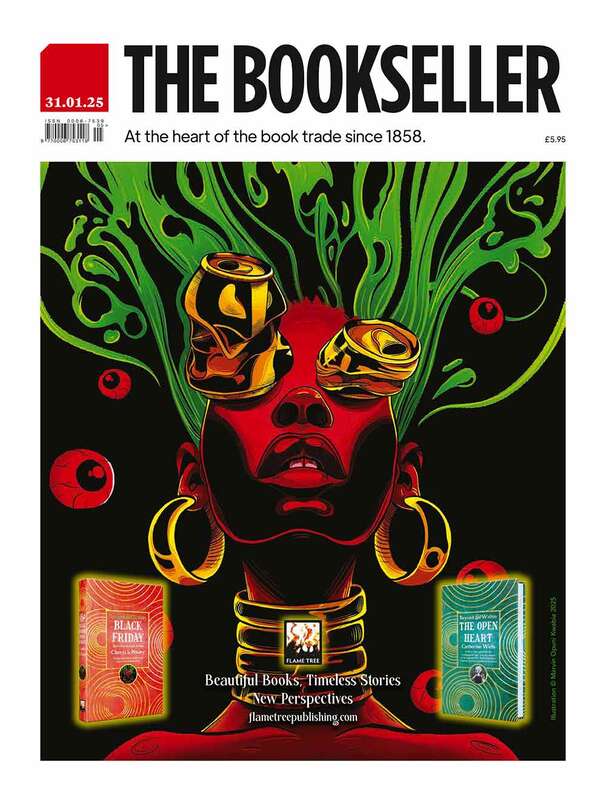You are viewing your 1 free article this month. Login to read more articles.
From pledges to action
The Bookseller‘s recent Climate Issue (October 15th) successfully addressed the intertwined problem of commercial and environmental sustainability from a range of perspectives. This is vital to encourage broad engagement and hopefully commitment to change.
But is the action the publishing industry is taking fast and far-reaching enough?
In the issue, the Editor’s Letter rightly pointed out that the climate emergency is immediate. Closed loop supply chains are one possible solution, but do we have time to wait for ideas, research-backed or otherwise? Net zero deadlines are too often vanities without action. If the end goal is achieved too late to change outcomes, action is meaningless. And there is much that can be done now.
The interconnections between commercial interests and sustainability are central to progress, so the risk of greenwashing is ever present. And trying to educate readers is never going to be enough without leadership and example. In this, the graphics industry in general and the book trade specifically can do much more. Radical, risky, creativity and investment from the major publishers would provide leadership and inspiration for smaller businesses, and for readers too.
Details, not despair
We do not need hystrionics to scare people into change. The prospects for a do-nothing approach to the climate emergency are grim and widely recognized, and terrifying proclamations and doomsday scenarios risk turning people away. More important is to recognise that there will be life after climate collapse, but we may not want or be able to live it.
I humbly suggest that a closer look at the Publishing Association’s (PA) Publishing Declares pledge might offer more substance in addition to the five prongs. Net zero fine, but how? Work with resource efficient (que?) supply chain partners. How? Use sustainable processes and materials. What are these? Support climate literacy. How? Raise awareness and drive positive climate action. How? Fortunately many of these questions already have answers and tangible options are available to the pledge signatories. Equally fortunately, most of those signatories have the resources and market clout to drive implementation.
A few suggestions for what publishers can do now
1. Set up an inhouse Environmental Management System (EMS) and only work with suppliers who also have an EMS. ISO 14001, based on principles of continuous improvement to environmental impact mitigation, is an excellent tool for this.
2. Require print service providers to calculate the carbon footprint of each book printed at their production sites. Here too ISO has a useful tool. ISO 16759 is a carbon calculator for print. Its requirements address all aspects of a printed book’s production to calculate its carbon footprint.
3. Create and share an environmental management policy or manifesto with customers, service providers and the rest of the supply chain. If the PA could come up with a single Book Publishers’ Sustainability Manifesto, so much the better.
4. Develop company-wide recycling and sustainability policies that authors, booksellers and readers can conveniently support. Offer collections for returns and set up dedicated Free Book community websites. This can work on a massive or teensy scale.
5. Use direct digital printing for on demand production and develop a robust network for this form of sale with bookshops, large and small. Only work with printing companies who use process-less printing plate imaging, which cuts out the chemical processing stage of printing plate production.
6. Build in-house toolkits to support the development peoples’ knowledge development of climate change mitigation, and that explain what they can do now (colour management at the start of book design processes, the sustainability limitations of different substrates, matching run lengths to printing technology, designs for end-of-life and recyclability etc.). Such a toolkit could become a standard that all publishers use.
That pledge
The PA’s pledge is a solid start but tangible, realistic and measurable actions can be taken now. The annual report anticipated for later this year might be more useful if it includes some sort of call to arms rather than merely confirming what we already know: we’re knackered, if we don’t change soon. A talking shop “a safe place for collaboration” as one of your interviewees put it, is not enough. Chat doesn’t cut it.
The materials index the PA proposes is a great idea, and will be tough to implement because it depends on cooperation from materials and services providers. It might be more helpful to provide the carbon footprints of the most popular substrates and embellishments used in book production, along with guidance for designers. Such questions could be part of the membership survey.
E-books
The thorny matter of e-books and other digital content also needs more knowledge sharing and understanding. We have a dreadful digital habit whereby we want to store every single digitised dimension of our lives. From photos of breakfast through to email archives, we want it all out there across multiple competitive platforms. Rarely is the heavy emissions burden this carries ever considered because, as Climate Issue contributor George Walkley points out, we assume “that digital publishing has a lower overall environmental footprint than print”. Not necessarily, as he also explains.
Unlike e-media, print’s carbon footprint is stamped during production. Its use does not depend on electricity, devices, networks or server storage. It is a durable and emissions-free archive. How secure and environmentally friendly are electronic media archives? Will we still be able to open an e-book in 600 years time? And if so, at what environmental cost?
Now is the time
I am sorry to rant so, but our industry is at a crucial junction. Action to make print media supply chains environmentally accountable must begin now. Is writing a company’s environmental policy really so hard? Is it impossible to choose suppliers who have one and can demonstrate the results of their efforts to mitigate emissions? No, not really. It’s all out there. The bigger shout out is for individual and corporate commitment.
Laurel Lindström (writing as Laurel Brunner) has worked as an environmental commentator for the printing and publishing industries for over a decade, as well as writing about the technologies used to produce printed matter in all forms. She has seen the industry undergo profound changes since the advent of the Macintosh and PCs in the 1980s. Their effect was a massive reduction in print production’s environmental impact. This was thanks to technology but also to the existential threat technology posed to the previously proprietary and polluting prepress and printing industries. The shift to standard operating systems, digital data formats, process automation, colour and production quality management cut emissions, waste and remakes in the industry. They continue to do so.





